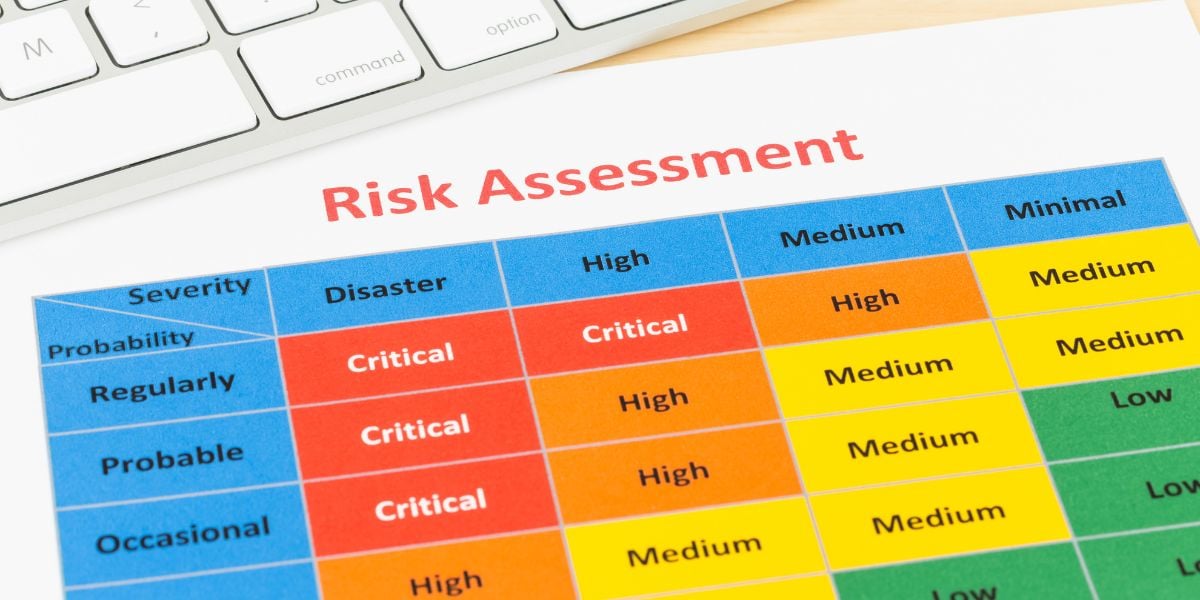
Conducting a risk analysis allows a rural practice to identify and prioritize potential risks specific to their environment. Due to fewer resources available to rural clinics, the risk analysis process must be adapted to be manageable and effective.
What is a risk analysis?
Risk analysis helps inform decision-making processes and enables the implementation of effective security measures as well as ensuring HIPAA compliance. It involves systematically identifying, evaluating, and prioritizing risks to understand their potential impact and likelihood of occurrence.
What kind of risk analysis is necessary for a rural clinic?
There are five central forms of risk analysis: security risk, privacy risk and third-party risk assessments, and business impact and disaster recovery analysis. While all the assessments are valuable, the following assessments are particularly required for a rural practice with limited resources.
- Security risk assessment: This assessment is required to identify security risks to patient data and information systems. It helps identify vulnerabilities and weaknesses that could lead to data breaches or unauthorized access. By focusing on security risks, the practice can allocate resources to address the most critical threats and implement targeted security controls.
- Privacy risk assessment: Assessing privacy risks is vital to ensure the confidentiality and privacy of patient health information. It helps identify potential gaps in privacy policies, procedures, and practices that could compromise patient privacy. This assessment enables the healthcare facility to prioritize privacy safeguards and implement necessary measures within its resource constraints.
- Business impact analysis: Conducting a business impact analysis allows the practice to assess the potential consequences of operational disruptions. While a comprehensive analysis may require more resources, a simplified assessment can still help identify critical systems and prioritize efforts to mitigate risks. This assessment helps the practice understand the impact of disruptions and develop strategies to maintain functions during adverse events.
Related: How rural healthcare organizations can protect data
How is a risk analysis performed?
1. Identify critical assets
Identify the most critical assets in the practice that require protection, focusing on patient data and information systems. This helps prioritize efforts and allocate resources effectively.
2. Conduct a basic threat assessment
Perform a basic assessment of the potential threats and risks specific to the practice. Consider common threats such as unauthorized access, data breaches, natural disasters, and equipment failures. This simplified assessment can help healthcare organizations gain an initial understanding of the risks they may face.
3. Assess existing controls
Evaluate the effectiveness of existing security controls and safeguards in the practice. This includes assessing physical security measures, access controls, password policies, and data handling practices. Identify any vulnerabilities or areas where improvements can be made with minimal resources.
4. Focus on low-cost mitigation measures
Prioritize low-cost or no-cost mitigation measures that can significantly improve security. This may involve implementing basic cybersecurity practices such as regular staff training on security awareness, enforcing strong password policies, and implementing basic firewall and antivirus protection.
5. Leverage existing resources
Identify readily available resources, such as online security guides, templates, and best practice recommendations from reputable sources like the Office for Civil Rights (OCR) or regional extension centers. These resources can guide in implementing appropriate security measures with limited resources.
Related: How to perform a risk assessment
How often should a risk analysis be conducted?
While HIPAA does not specify a specific frequency for conducting risk analyses, it does emphasize the necessity of regular assessments. Here are some factors to consider:
- Annual assessments: Conducting a comprehensive risk analysis at least once a year is best practice.
- Significant changes: Conduct a risk analysis whenever significant changes occur within your practice that could impact the security of patient data.
- Trigger events: Certain events or incidents may serve as triggers for conducting a risk analysis.
- Periodic reviews and updates: Even if there are no specific triggers, reviewing and updating your risk analysis periodically is necessary to ensure it remains relevant.
Identify and prioritize the most critical assets, systems, and processes
Identifying and prioritizing critical assets, systems, and processes in a small or rural practice requires a systematic approach. Begin by identifying the types of data and information systems that apply to your practice. This may include electronic health records (EHRs), patient demographics, billing information, diagnostic systems, or any other systems that store or process patient data.
Thereafter, assess the criticality and sensitivity of the identified data. Consider the impact on patient care, HIPAA requirements, and the potential consequences of unauthorized access, loss, or disclosure. Once you have gathered the necessary information, assess and prioritize assets, systems, and processes based on the level of risk. Consider the likelihood of threats and the value of the asset or system to patient care and the overall functioning of the practice.
Subscribe to Paubox Weekly
Every Friday we'll bring you the most important news from Paubox. Our aim is to make you smarter, faster.



